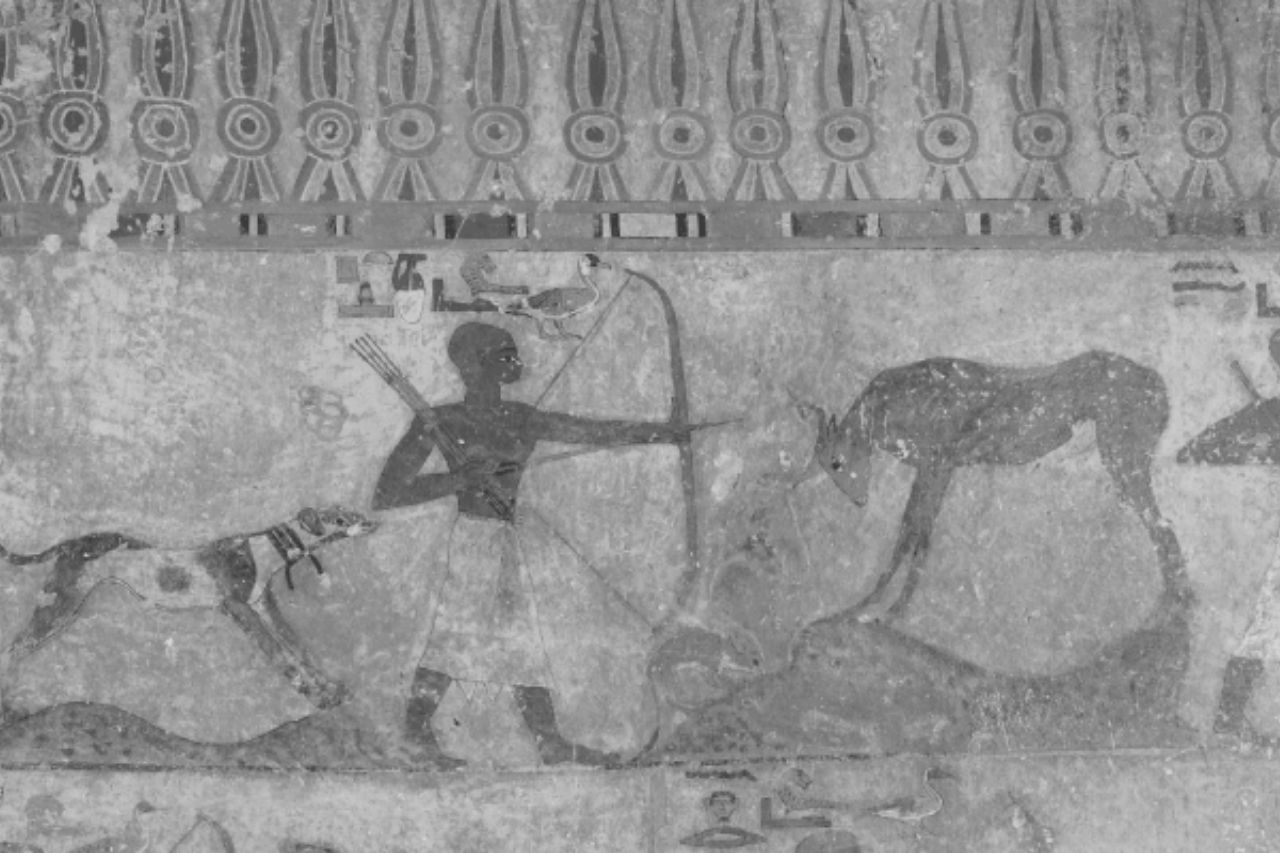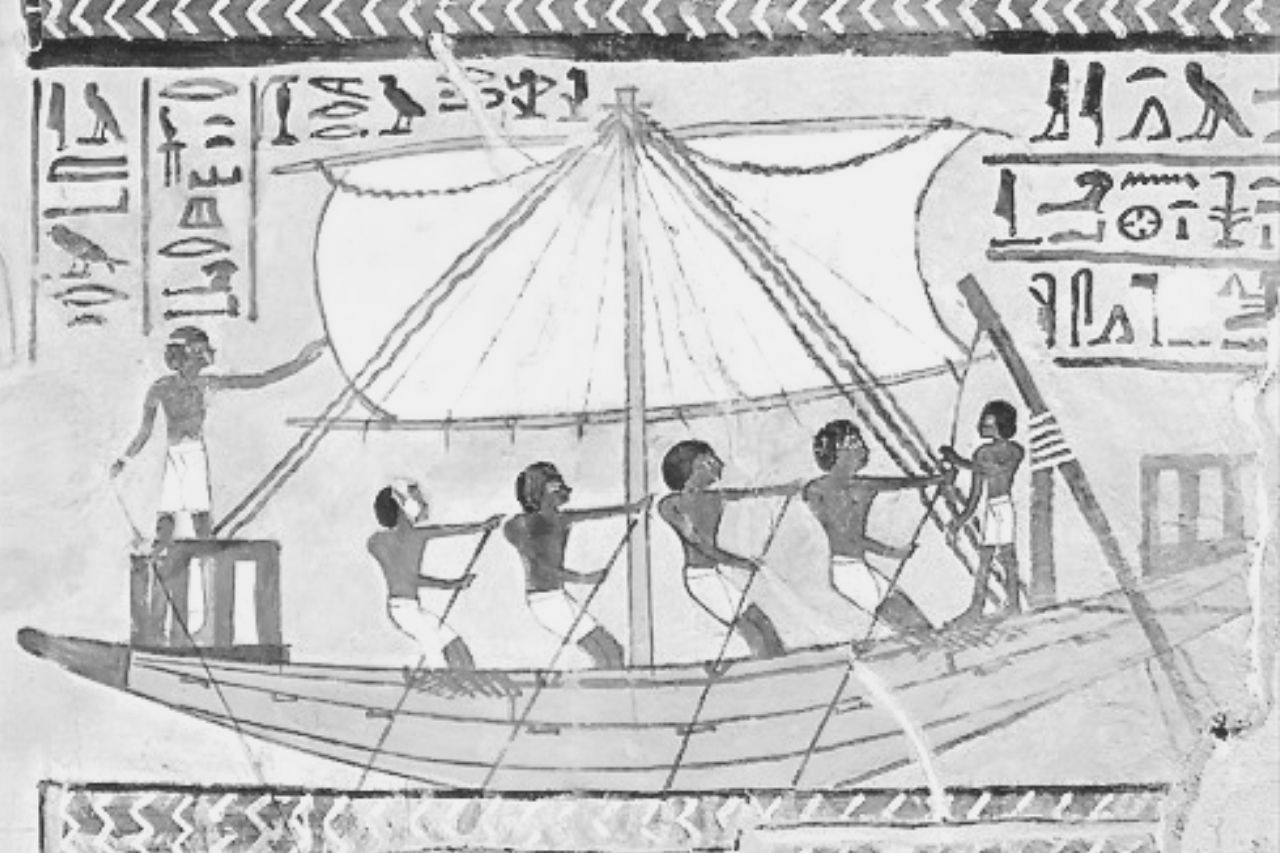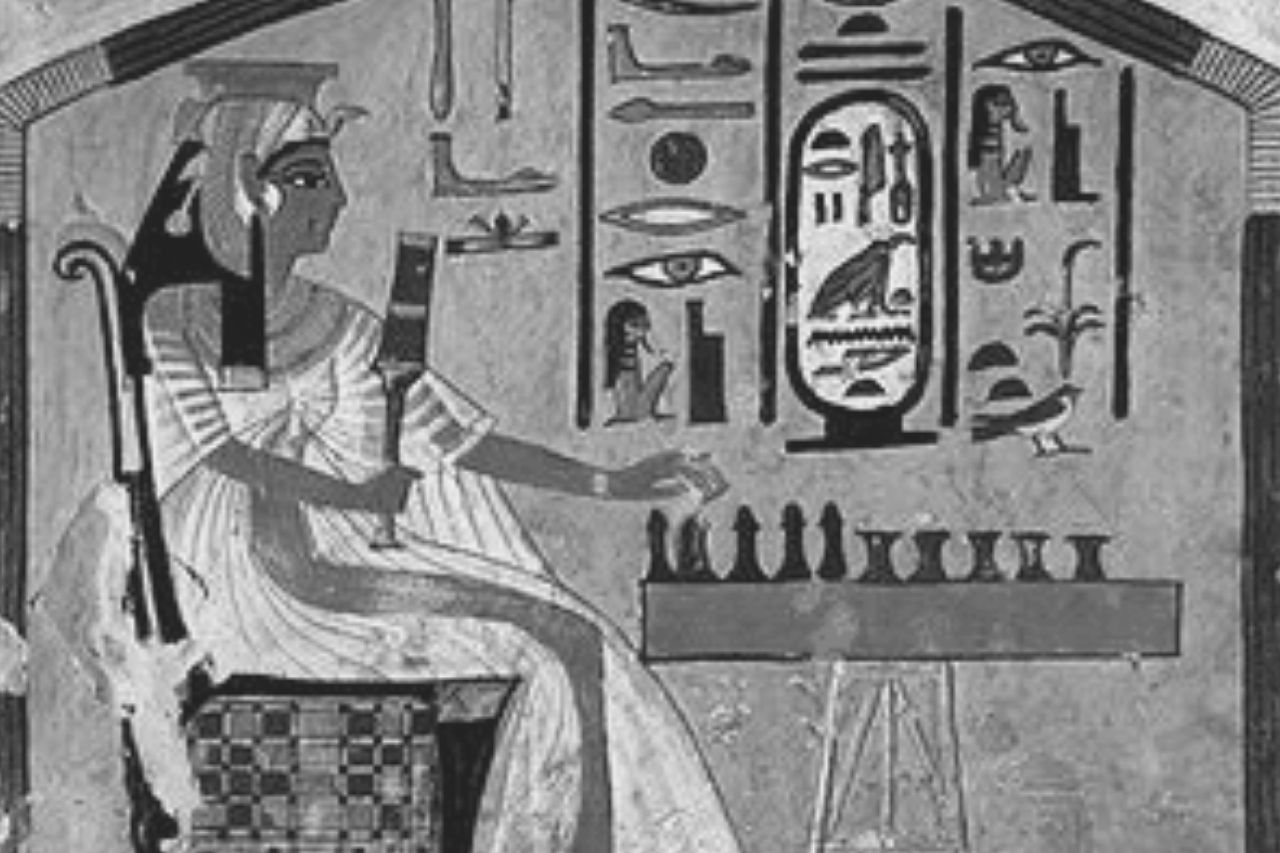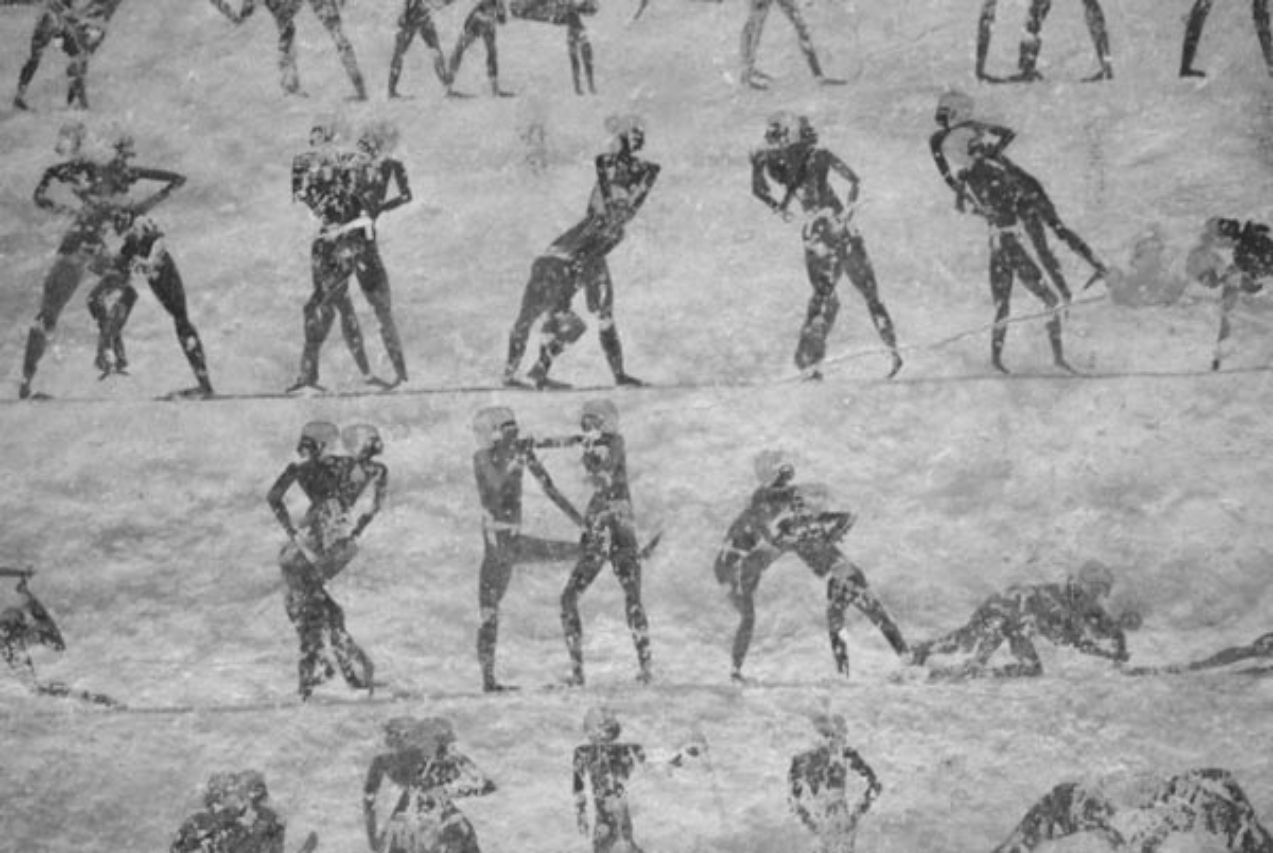Ancient Egyptian Sport: Fun & Games
Ancient Egyptian sports are one of the many physical activities enjoyed for fun in ancient Egypt. They are similar to the sports activities and games we enjoy today. You’ll be surprised to know that games like hockey have been played nearly the same way in ancient Egypt as today.
Sports and physical fitness were significant aspects of ancient Egyptian life and helped people maintain their mental health and fitness. Games like the popular Senet, a version of checkers, were more intellectual pastimes. These sports and games reflected the culture’s beliefs in participating in something enjoyable and positive for an individual’s entire well-being.
Over 200 painted scenes of wrestling, including female acrobatics and what appears to be modern gymnastics, are located at the site of Beni Hasan, who lived during Egypt’s Middle Kingdom.
The painting of soldiers conducting military training seems to indicate modern wrestling and combat styles. During the New Kingdom, engravings in the ancient tomb of Medinet Habu depict Egyptian wrestlers in front of the Pharaoh attempting to defeat rivals or foreign competitors.
Hyksos Era
After the Hyksos invaded during the Second Intermediate Period, sports and recreational activities changed to be inclusive of the Hyksos customs. The Hyksos introduced horse-drawn chariots to Egypt that became included in the routine performance and sports spectacles.
Pharaohs of the 18th Dynasty attempted to build on their military credibility by depicting themselves on the walls of their ancient tombs riding war chariots, hunting for sport, or wrestling.
Fishing, boxing, wrestling, rowing, weightlifting, and gymnastics were among the most famous ancient Egyptian sports. The most popular sports in Egypt were field hockey, wrestling, and archery. Archery was well-liked by many but mainly practiced by nobility, princes, and Pharaohs. An excellent archer, Pharaoh Amenhotep II (1425-1400 BCE), was known to have been able to hit a target with his bow from a moving chariot.
Physical exercise was essential to the nobility of ancient Egypt but was not limited by class. Evidence from artistic depictions in the tombs of the Pharaohs indicates that people from each class within ancient Egyptian society enjoyed and participated in sports activities.
The Egyptian Pharaohs are often depicted on the walls of their tomb with an arched bow or hunting. The graves of civilians are adorned with images of people racing, swimming, running, playing handball, and jumping for sport.
Types of Ancient Egyptian Sports
Hockey
Handball
Gymnastics (floor exercises)
Javelin Throw
Fishing
Boxing
Weightlifting
High Jump
Swimming
Rowing
Archery
Rhythmic Gymnastics
Marathon Running
Tug of War
Ancient Egyptians engaged in various team sports, many of which are similar to the team sports and popular sports in Egypt enjoyed today. Coordinated displays of strength, teamwork, and sportsmanship were necessary for many of the competitive events inspired intense emotion from spectators, just as they do today.
Field hockey was a popular sport among ancient Egyptians. They used the palms and stalks of a palm tree to make hockey sticks, which had a distinctive curvature at one end. The ball that they used to play contained a core composed of papyrus and the outer shell of leather that came in various colors.
There are 5000-year-old drawings of ancient Egyptians enjoying the game of handball that can be found on the walls of the Saqqara tombs. For the ball to be light and durable, it was constructed of leather and filled with plant fibers, hay, or made of papyrus plants like those used during hockey. It was rarely used for more than one match at a time.
Another popular competitive team sport was tug-of-war though it was slightly different. Teams created two opposing lines of players, and those teammates at the front of each line pulled their opponents’ arms, while their teammates grabbed the waist of the player in front of them and pulled until one team pulled the other across a line.
Field and track sports, such as the high jump, were popular among ancient Egyptians. Two players sat with their legs extended out in front of them, one player’s foot on top of the other’s toes. If the third player successfully jumped over the barrier, the two seated players raised the barrier by placing their palms on top of their feet, which the third player had to jump over without touching.
Wrestling in Ancient Egyptian Sport
Wrestling has the best visual documentation of all the sports enjoyed by the ancient Egyptians. Several wrestling scenes adorn the tombs of the Pharaohs of the Middle Kingdom. During the 11th Dynasty, Baqet III served as the governor or chief of the Oryx nome, a territory within Upper Egypt. Within his ancient tomb from approximately 2000 BC, a mural depicts wrestlers in a series of movements one after the other.
Viewing it in stop-motion, the detailed visual displays a narrative of advanced techniques indicative of the moves we see from the UFC champions today. In its entirety, the mural depicting wresting in Baqet III’s tomb reveals a mixture of techniques from martial arts, single and double leg takedowns, as well as what would be considered modern Judo.
Like the Greeks and Romans, ancient Egyptians practiced wrestling in the nude. However, naked wrestling was abandoned during the New Kingdom as it increasingly became a spectator sport. Egyptian wrestlers dressed in a garment fashioned like that worn by soldiers, correlating the sport with the same respect obtained by fighting in battle. Wrestling contests were a part of the New Kingdom’s custom for celebrating or marking occasions with the Pharaoh present to oversee the match.
Wrestling During Ramses III
Within the temple of Ramses III at Medinet Habu, there is a mural depicting wrestling from Ramses II‘s time. The match shows Egyptian and Nubian wrestling, and an audience comprised of Ramses’ court watching was considered to be one of the earliest depictions of the sport.
Nubian diplomats are in the mural among those in attendance watching as one countryman attempted to overpower the other. This mural represents a symbolic display of Egypt’s superiority over its regional neighbors, as Nubia was conquered during the Middle Kingdom.
Wrestling, stick fighting, and other forms of contact sports were popular during the New Kingdom too. Widely depicted in ancient tombs and referenced in historical literature, wrestling remained a popular sport in Egypt for thousands of years. It remained the favorite sport in the region following the Greek conquest of Egypt in 332 BC.
The Romans conquered Egypt 300 years later in 30 BC, and wrestling remained a ritualistic staple at celebrations. Wrestling practices changed slightly after the Roman conquest, formalizing to include more rules against aggressive moves so that it could be enjoyed as a spectator sport for arena-sized audiences.
Ancient Egyptian Sport: Boxing and Fighting
Boxing was also popular as it too is depicted in ancient Egyptian art. An ancient Egyptian boxing scene is featured on a sculpture dated from around 1350 BCE in Thebes, which served as the capital of ancient Egypt. Three sets of boxers and the Pharaoh himself are among the spectators in the sculpture. Archaeologists discovered boxers, wrestlers, and stick fighters in the tombs of ancient Egypt’s 18th Dynasty (1570-1320 BC).
The nobles not only played sports, but they also enjoyed watching them, like everyone else. The fast-fighting activities were one of the most popular water sports, in which two people would battle the waves of the Nile on a small boat. Rowing and swimming, wrestling, and throwing of a spear were equally popular sports for spectators.
Hunting and fishing were popular pastimes in ancient Egypt, just as they are today. In the surrounding Nile marshlands, ancient Egyptians used various tactics to harvest fish as a sport and as a means of putting food on the table. Egyptian fishers utilized a hook and line made of bone and woven plant fibers to catch fish.
Hunting, fishing, rowing, and archery impacted the development of other sports and were also helpful in combat and military excursions. According to archaeologists, the modern javelin is said to have evolved from both spear hunting and military spearman techniques derived from the practices of the ancient Egyptians.
Ancient Egyptian Sports and Celebrations
Sporting events were indeed a feature of ancient Egyptian rites and religious festivals honoring the gods. To celebrate the god Horus‘ victory and the victory of harmony and balance over the forces of those seeking disorder under the god Seth, participants typically staged imaginary battles between Horus’ believers and those of the god Seth.
Egyptians preferred organized athletic events such as boxing and stick fencing. Marathon races were significant activities, especially at Pharaoh’s birthday or ceremonial festivities. During these celebrations, the Pharaoh ran a marathon around the temples in front of the crowds. It was to demonstrate his physical power and capacity to rule using both his physical and cerebral talents.
The importance of physical health to a Pharaoh’s ability to govern was reflected in the Heb-Sed festival, held after a king’s first thirty years on the throne; the festival was meant to rejuvenate him. The festival measured the Pharaoh’s ability to complete several skills and endurance tests, including archery.
Fierce Women of Ancient Egypt
During the New Kingdom, princes were frequently commissioned as generals in the Egyptian army and were expected to command significant campaigns and display skill and strength. Urged to exercise regularly, a prince’s popularity amongst his subjects and fellow military members rested on his physical abilities.
Sneferu and the Green Jewel story occurred during the Reign of the Pharaoh Sneferu and is recorded in an ancient papyrus from the Second Intermediate Period (1782-1570 BCE). The text reveals how ancient Egyptians revered sports and were interested in royal participation in sports and ceremonial sports activity.
This epic tale depicts a time when Pharaoh Sneferu was suffering from depression. One of the Pharaoh’s leading advisors suggests that he should go boating on the lake to restore his mind and spirit. The story goes on to detail that the Pharaoh followed his advisor’s suggestion and spent the afternoon watching a performance by twenty female rowers.
Swimming in Ancient Egypt
Swimming, boating, and river games were among the Egyptians’ favorite pastimes since the Nile River was such an essential part of their lives. Ancient Egyptians are shown in hieroglyphs as great swimmers and aquatic athletes.
The first manuscripts referring to the activity of swimming were discovered in the pyramids of the early ancient Pharaohs. Many of the depictions of swimming found in the ancient Egyptian tombs are of a religious nature, explaining how the deceased should travel on to find paradise after death. The Pharaoh must swim to an island where he can be scooped up by a boat and continue his trip. These images indicate that swimming was a known skill and was necessary for preparing for the afterlife.
Swimming is a survival skill and, as preparation for the afterlife, appears to have been reserved for royalty or upper-class members. Between 2155 and 2016 BC, Egypt’s territorial Dukes fought for political supremacy against one another. It was vital for them to demonstrate their strong ties with the Pharaoh as a prestige symbol.
One such member of royal society describes in his biography how fortunate he was as a child to attend a school that gave him swimming lessons, making him appear as a royal equal in the eyes of others.
The wealthiest members of society, including the royal families and the Pharaoh, equipped themselves and their homes with private pools, allowing them to enjoy freshwater. Pools were necessary as the waters of the Nile were not ideal for swimmers of the upper class. The pools of the ancient Pharaohs are frequently referenced in literature, architectural designs, and artistic expressions detailing their use for recreation and as a space to recover at the end of a hot day.
Sports Played by Women in Ancient Egypt
Female acrobats performed for Pharaohs and Egyptian royalty, and ancient Egypt is where the first known physical proof of gymnastics can be found. According to depictions found in ancient tombs, acrobats entertained Egyptian nobility and performed at ceremonial celebrations.
Queens were no less mindful of the value of athletics in all aspects of society, as Queen Hatshepsut of the 18th Dynasty had herself shown in a similar stance in the Heb Sed on a wall of her sanctuary in the Karnak Temple.
Dancing appears to have been a spectator sport in which women entertained at royal banquets and ceremonial celebrations. Men usually danced with other men, and women with other women. In private houses and at the palace, singers, whether solos or large choruses accompanied by musical instruments, entertained visitors and encouraged a festive setting for dancing and celebration.
Beyond the Physical: Ancient Egyptian Board Games
Sports played an important cultural and social significance in ancient Egypt 2,000 years before the first Olympic games were conducted in ancient Greece. Several of the most well-known Pharaohs demonstrated their dominance by doing physical and participating in physical activities such as archery, track, and chariot racing.
One of the first known board games was Senet, favored by the young Pharaoh Tutankhamun and Queen Nefertari, wife of Ramesses II. It was played as early as 3100 BC, when Egypt’s 1st Dynasty was just beginning to decline from power. Senet boards were long and slender, with 30 squares set out in three rows of 10 squares.
How Senet Worked?
Two players were given an equal number of game tokens, generally five to seven, and had to race to the end of the board with all their pieces, and participants tossed sticks instead of dice to determine the number of squares moved. Players can attempt to hinder their opponent, preventing them from going ahead or even sending them backward on the board, as in most sophisticated strategic games.
Senet evolved from a pastime with little religious significance to symbolizing the netherworld, with its squares portraying key gods and religious figures representative of events in the afterlife.
Dancing for Leisure
Ancient Egyptians enjoyed several leisure activities that stretched their minds as well as their bodies. Children’s games, board games, and other activities made play an important part in life in ancient Egypt. Dancing was enjoyed by all classes and members of ancient Egyptian society and was included as an essential part of rituals and celebrations.
Dance troupes existed even then and were hired to perform for ceremonial or celebratory occasions. In ancient Egypt, there were six types of dancing: harem dances, feast dances, religious and non-religious dancing, battle dancing, and street dancing. A party’s general design isn’t too dissimilar from what we have now.
Some affluent harem ladies were educated in music and dance. They performed for the king and queen, accompanied by male musicians who played guitars, lyres, and harps. Scenes of performers linked with funerals appear in Old Kingdom ancient tombs and are the first depictions of dancing in ancient Egypt.
Conclusion
We’ve covered a lot of history about Ancient Egyptian Sports. Let’s review five of the top sports played in Ancient Egypt:
Wrestling was watched and enjoyed by many members of society and is represented on murals in the ancient tombs of pharaohs.
Fishing and rowing were enjoyed for sport and sentience.
Some of the earliest forms of gymnastics date to the period of the ancient Egyptians and were an important part of ceremonies and celebrations.
Hockey was played similarly to how it is still played today.
Royals showed their strength in archery competitions and in ceremonial shows of strength.
Now you know that friendly competition and displays of physical abilities have been enjoyed for many centuries. The ancient Egyptian sports of yesterday are like sports played today. What ancient Egyptian sport would you participate in?














